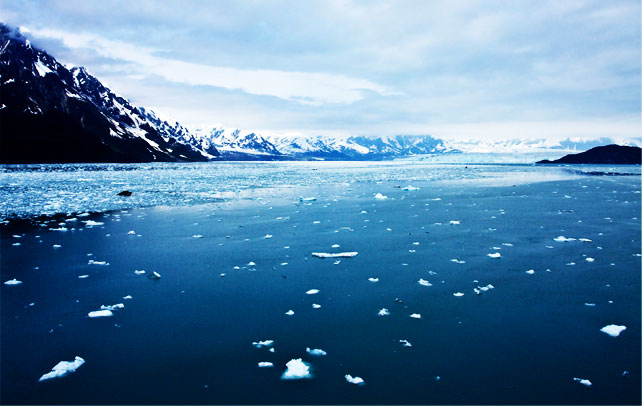Interesting Facts About The Arctic Ocean

Though the Arctic and the Antarctic may seem similar to many people, they are in fact poles apart. While the former is a continent surrounded by oceans, the later is an ocean surrounded by continents. And unlike Antarctic, which is a barren desert, the Arctic is teeming with life. The Arctic Ocean is located in the Arctic Circle and the most visible feature of it is that the Ocean is always covered in ice for most of the year. Surprisingly, even though it looks barren, many creatures flourish here and the region is extremely rich in natural resources. As a result, humans have exploited the Arctic for centuries and the toll it had taken on the fragile environment is being increasingly apparent now. The ice cover is rapidly shrinking, which will have an adverse affect on the environment of the planet. The shrinking ice pack is leading to rise in global sea levels and ozone layer depletion. Scientists believe that if the present level of meltdown continues, then the Arctic Ocean would be ice-free by the next 4 to 5 decades disrupting ocean current patterns and leading to severe effect on climate change. Therefore, the survival of mankind depends a lot on the survival of this ocean. To know more on the Arctic Ocean read the interesting facts given below.
Interesting Facts About The Arctic Ocean
- The Arctic Ocean is surrounded by Greenland, Alaska, Canada, Russia and Norway making it virtually landlocked. The Ocean is connected to the Pacific Ocean by the Bering Strait and the Atlantic Ocean by the Greenland Sea.
- At around 13,986,000 square kilometers, it is the smallest ocean in the world and is located around the North Pole.
- At the bottom of the Arctic basin, there is always a pool of very cold water. This is because, though the Ocean is connected to the Pacific and Atlantic Ocean, there is an exchange of surface water with the subsurface current bringing in warm water from the Atlantic Ocean (the strait connecting it to the Pacific Ocean is very shallow and narrow). However, the submarine ridges prevent the exchange of deeper water and so it remains cold.
- The deepest spot in the Arctic Ocean is the Eurasian Basin at 17,880 feet. The average dept of the Arctic Ocean is around 3406 feet.
- There are three types of ice that covers the Arctic Ocean—polar ice, pack ice and fast ice. Polar ice never melts completely and can be as thick as 50m in winter and as thin as 2m in summer. The ice at the edge of the polar ice is known as pack ice. Pack ice freezes completely only in winter. The ice formed around the pack ice and the land around the Arctic Ocean during the winter is known as fast ice.
- The Arctic Ocean remains covered by an ice cap for most of the year as its temperature rarely rises above the freezing point. The extent and thickness of the ice cap varies seasonally. From October to June, the ocean is virtually ice locked.
- The Arctic Ocean is full of life and has a fragile ecosystem. Marine life includes walruses, whales and jellyfish. The banded gunnel is the only species of gunnel, a type of fish, found in the ocean. The ocean is teeming with fish life and more fishes are found here than anywhere on the earth. Plant life is minimal except for phytoplankton, which is a crucial part of the ocean ecosystem.
- The ocean is also rich in natural resources. The region holds around 25% of the world’s undiscovered petroleum resources. Apart from petroleum and natural gas there is also abundance of placer deposits, polymetallic nodules, sand and gravel aggregates.
- The salinity of the Arctic Ocean varies seasonally depending on the melting and freezing of the ice cover. It has the lowest average salinity among all the oceans because of low evaporation, heavy inflow of freshwater and limited connection to other oceans.
- The North Polar Basin in the Arctic Ocean is divided into two oceanic basins—the Eurasian Basin and the Amerasian Basin. The two basins are further divided by ridges into Canada Basin, Makarov Basin, Fram Basin and Nansen basin.
- Icebergs often form or break away from glaciers posing a threat to ships the most famous being the Titanic. Ships also often get trapped or crushed by the ice.









